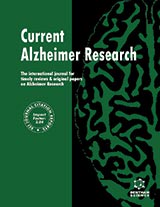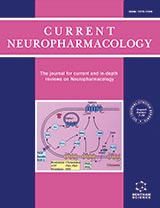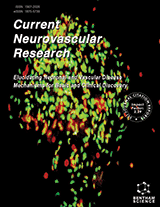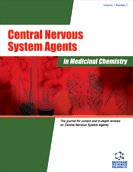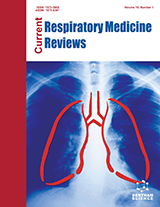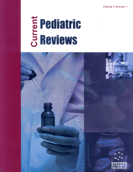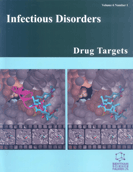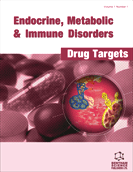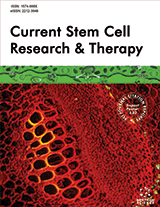摘要
阿尔茨海默病(AD)的新概念被认为是一种临床生物实体,在痴呆发展前生物标志物的定义是很有必要的,可用于在体内障碍的诊段。不同类型的遗传,生化和神经影像学标志物被描述,突出了发生在大脑过程中的疾病的一些变化,然而,很少有特定的以及有诊断价值的证据。此外,许多使用的化验是难以执行的,设备/试剂很昂贵或有潜在的危险性( 例如,使用放射性化合物,脑脊液提取)。因此,有必要确定更合适以及方便的方法,例如确定容易获得的血液参数,以及可以毫无顾忌的重复使用,这些数据可以通过程序被使用,结合具体的和非具体的变化对患有AD与其他相关疾病的不同阶段的AD病人进行分类,很大的相关性和可靠性(>80%),本文中血液参数是广泛的,包括淀粉样β蛋白,tau,载脂蛋白和蛋白质以及血液细胞的代谢行为等。在阿尔兹海默病中,与中枢和外周炎症过程相关的蛋白质,细胞因子/趋化因子和其他细胞因子都十分重要,新技术去检测和量化物质,合理的价格如振动光谱,面板参数和算法以评估结果,将是早期诊断和定义新的潜在疗法的基础。
关键词: 阿尔茨海默病;淀粉样蛋白;生物标志物;血液;血细胞;细胞因子;趋化因子;血浆;轻度认知障碍;血清;血液蛋白;振动光谱。
Current Alzheimer Research
Title:Blood-Based Biomarkers of Alzheimer´s Disease: Diagnostic Algorithms and New Technologies
Volume: 13 Issue: 4
Author(s): Pedro Carmona, Marina Molina, Adolfo Toledano
Affiliation:
关键词: 阿尔茨海默病;淀粉样蛋白;生物标志物;血液;血细胞;细胞因子;趋化因子;血浆;轻度认知障碍;血清;血液蛋白;振动光谱。
摘要: New concepts about Alzheimer's disease (AD), considered as a clinical-biological entity, make essential the definition of biomarkers that could be used for the in vivo diagnosis of the disorder before dementia develops. Different types of genetic, biochemical and neuroimaging markers have been described, highlighting some of the changes that occur in the brain during the course of the disease, yet there is little proof of their pathognomonic and diagnostic value. Furthermore, many of the assays used are difficult to perform, the equipment/reagents are expensive or potentially hazardous (e.g.; use of radioactive compounds, CSF extraction). Thus, there is a need to define more suitable and convenient approaches, such as the determination of blood parameters that are easy to obtain and that can be repeated as necessary without contraindications. These data can be used by algorithms that combine specific and non-specific changes to classify patients at different stages of AD and/or distinguish AD from other related diseases with a greater specificity and reliability (> 80%). The blood parameters considered in this review are varied, including: β-amyloid, tau, apolipoproteins and proteins, as well as the metabolic behavior of blood cells, etc. Among the proteins, cytokines/chemokines and other cell factors related to both neuro-inflammatory and peripheral-inflammatory processes in AD are of prime importance. New technologies to detect and quantify these substances, reasonably priced such as the vibrational spectroscopy, panels of parameters and algorithms to assess the results, would be fundamental for the early AD diagnosis and to define new potential therapies.
Export Options
About this article
Cite this article as:
Pedro Carmona, Marina Molina, Adolfo Toledano , Blood-Based Biomarkers of Alzheimer´s Disease: Diagnostic Algorithms and New Technologies, Current Alzheimer Research 2016; 13 (4) . https://dx.doi.org/10.2174/1567205013666151116130301
| DOI https://dx.doi.org/10.2174/1567205013666151116130301 |
Print ISSN 1567-2050 |
| Publisher Name Bentham Science Publisher |
Online ISSN 1875-5828 |
 94
94 5
5 1
1 1
1
- Author Guidelines
- Bentham Author Support Services (BASS)
- Graphical Abstracts
- Fabricating and Stating False Information
- Research Misconduct
- Post Publication Discussions and Corrections
- Publishing Ethics and Rectitude
- Increase Visibility of Your Article
- Archiving Policies
- Peer Review Workflow
- Order Your Article Before Print
- Promote Your Article
- Manuscript Transfer Facility
- Editorial Policies
- Allegations from Whistleblowers
- Announcements
Related Articles
-
Evaluation of In Vivo and In Vitro Antimicrobial Activities of a Selective Serotonin Reuptake Inhibitor Sertraline Hydrochloride
Anti-Infective Agents Nuclear Imaging of Inflammation in Neurologic and Psychiatric Disorders
Current Clinical Pharmacology Cardiovascular Risk Factors in Chronic Inflammatory Rheumatic Diseases: Modern Assessment and Diagnosis
Current Vascular Pharmacology HIV and Substance Abuse: A Commentary
Current HIV Research Exploring the Management of Statin Intolerant Patients: 2016 and Beyond
Current Vascular Pharmacology Lack of Association between Genetic Polymorphism of Circadian Genes (PER2, PER3, CLOCK and OX2R) with Late Onset Depression and Alzheimer's Disease in a Sample of a Brazilian Population (Circadian Genes, Late-Onset Depression and Alzheimer's Disease)
Current Alzheimer Research Is Plasma Amyloid-β a Reliable Biomarker for Alzheimers Disease?
Recent Patents on CNS Drug Discovery (Discontinued) Conference Report: 181<sup>st</sup> Annual Meeting of the American Association for the Advancement of Science (AAAS), San Jose Convention Center, San Jose, CA, USA February 12-16, 2015
CNS & Neurological Disorders - Drug Targets Association between <i>Toxoplasma gondii</i> Infection and Headache: A Systematic Review and Meta-Analysis
Infectious Disorders - Drug Targets New Molecular Avenues in Parkinson ’ s Disease Therapy
Current Topics in Medicinal Chemistry Chronic Psychosocial Stress Exacerbates Impairment of Synaptic Plasticity in β-Amyloid Rat Model of Alzheimers Disease: Prevention by Nicotine
Current Alzheimer Research Nanomedicine Strategies for Sustained, Controlled and Targeted Treatment of Alzheimer’s Disease
Mini-Reviews in Medicinal Chemistry Plasma Acetylcholinesterase Activity Correlates with Intracerebral β-Amyloid Load
Current Alzheimer Research Microglial Activation in Alzheimers Disease
Current Alzheimer Research Potential Role of IL-18 in the Immunopathogenesis of AIDS, HIVAssociated Lipodystrophy and Related Clinical Conditions
Current HIV Research Trophic Effect of Glutamate
Current Topics in Medicinal Chemistry The Role of miR-124 in Drosophila Alzheimer's Disease Model by Targeting Delta in Notch Signaling Pathway
Current Molecular Medicine Gene Therapy: How to Target the Kidney. Promises and Pitfalls
Current Gene Therapy Update on the Pharmacological Treatment of Alzheimers Disease
Current Neuropharmacology Perispinal Etanercept for Treatment of Alzheimers Disease
Current Alzheimer Research


